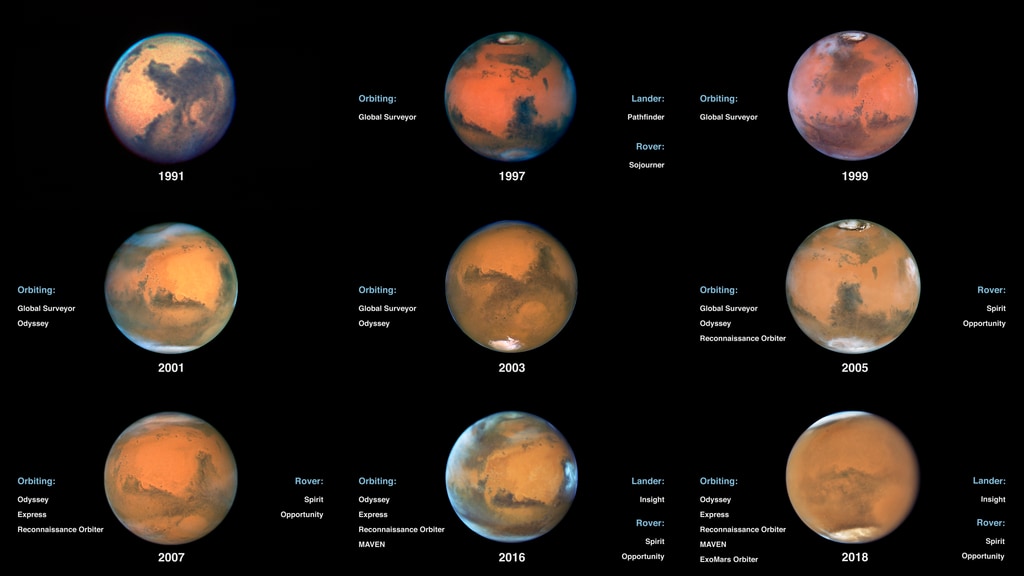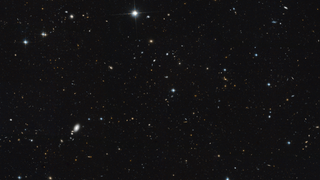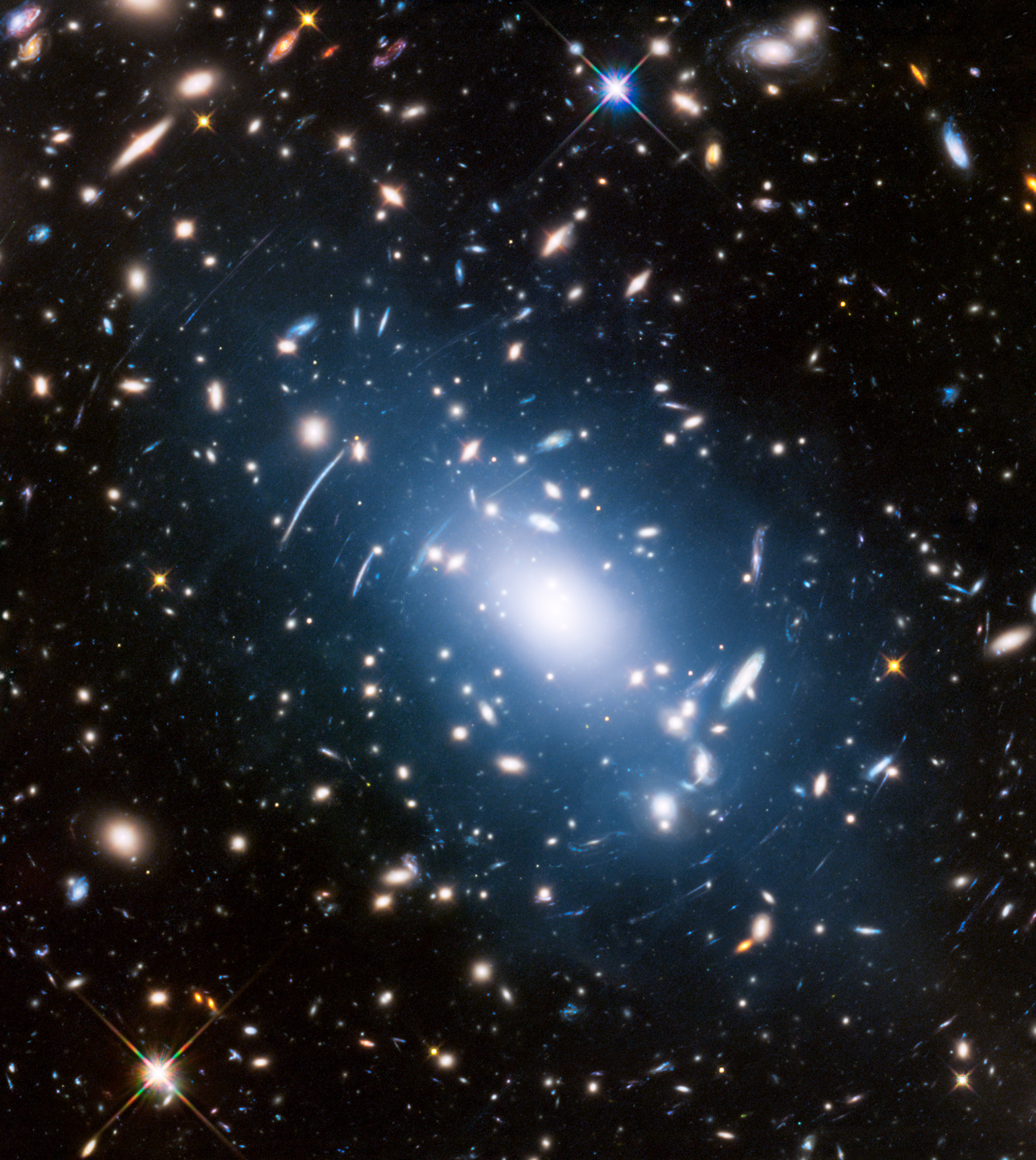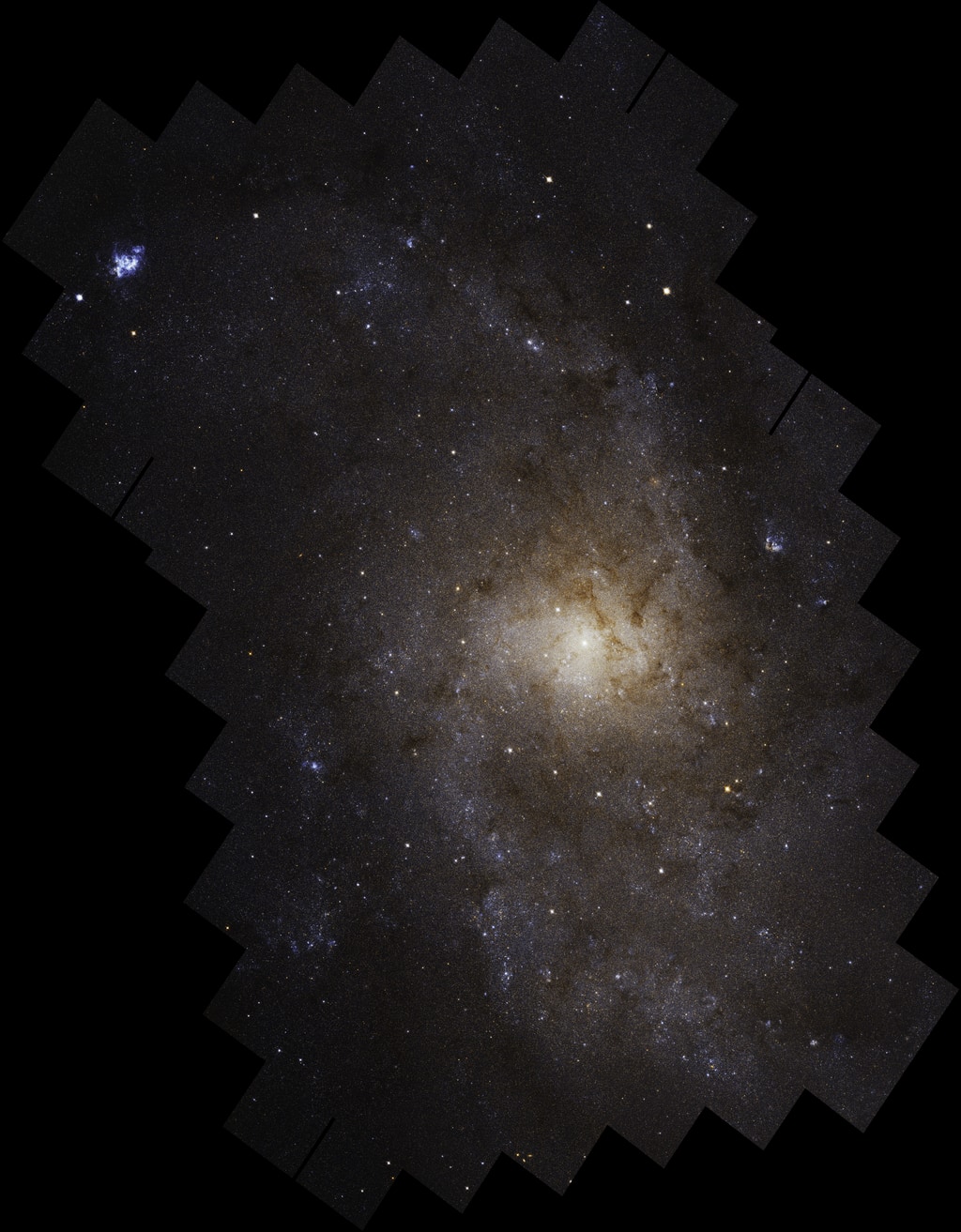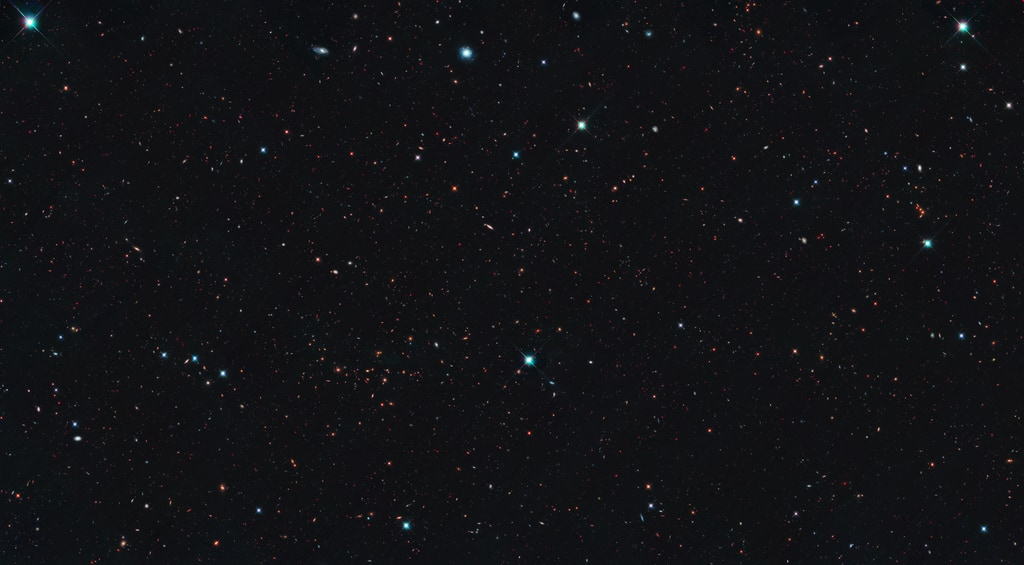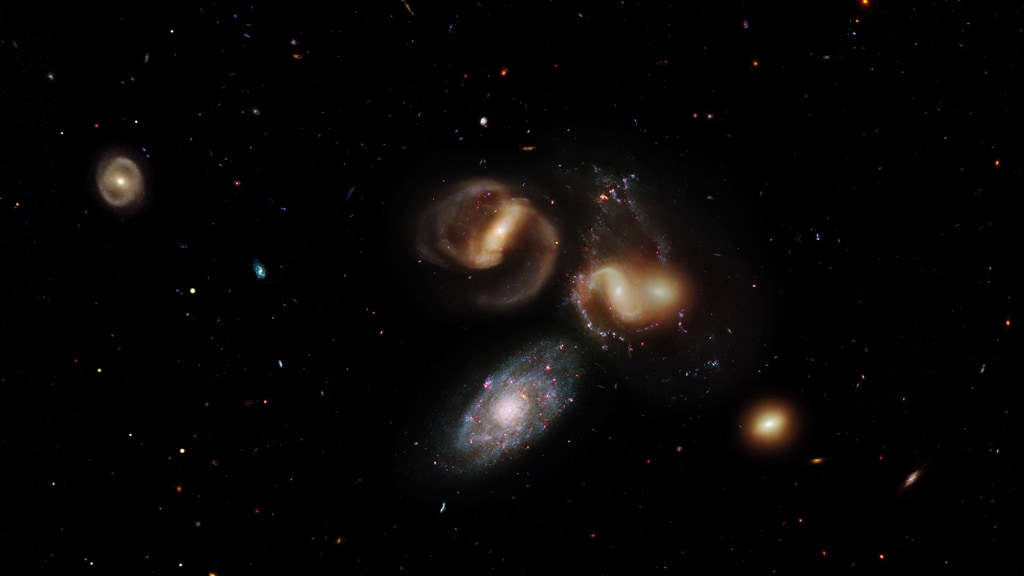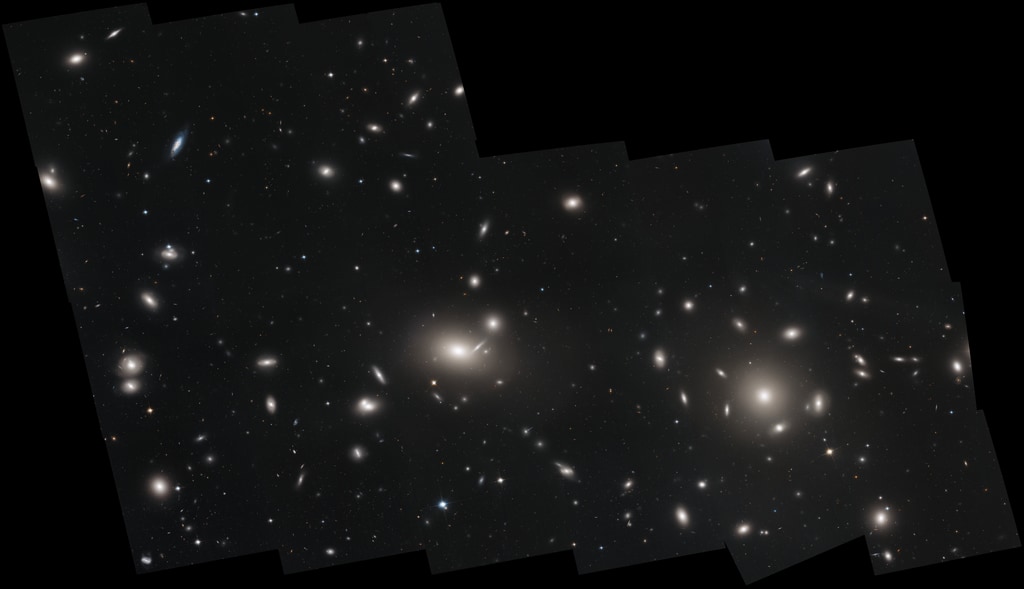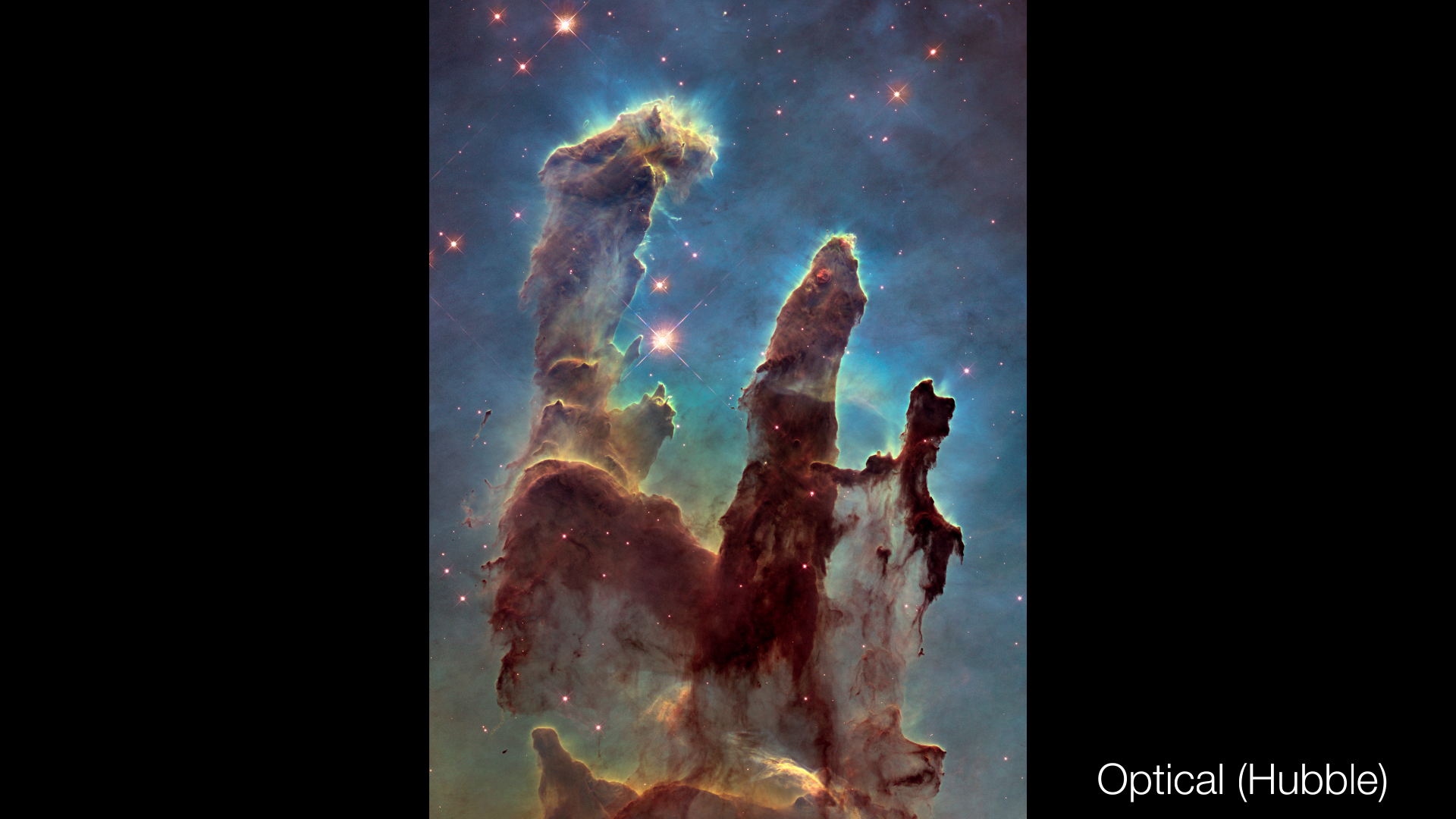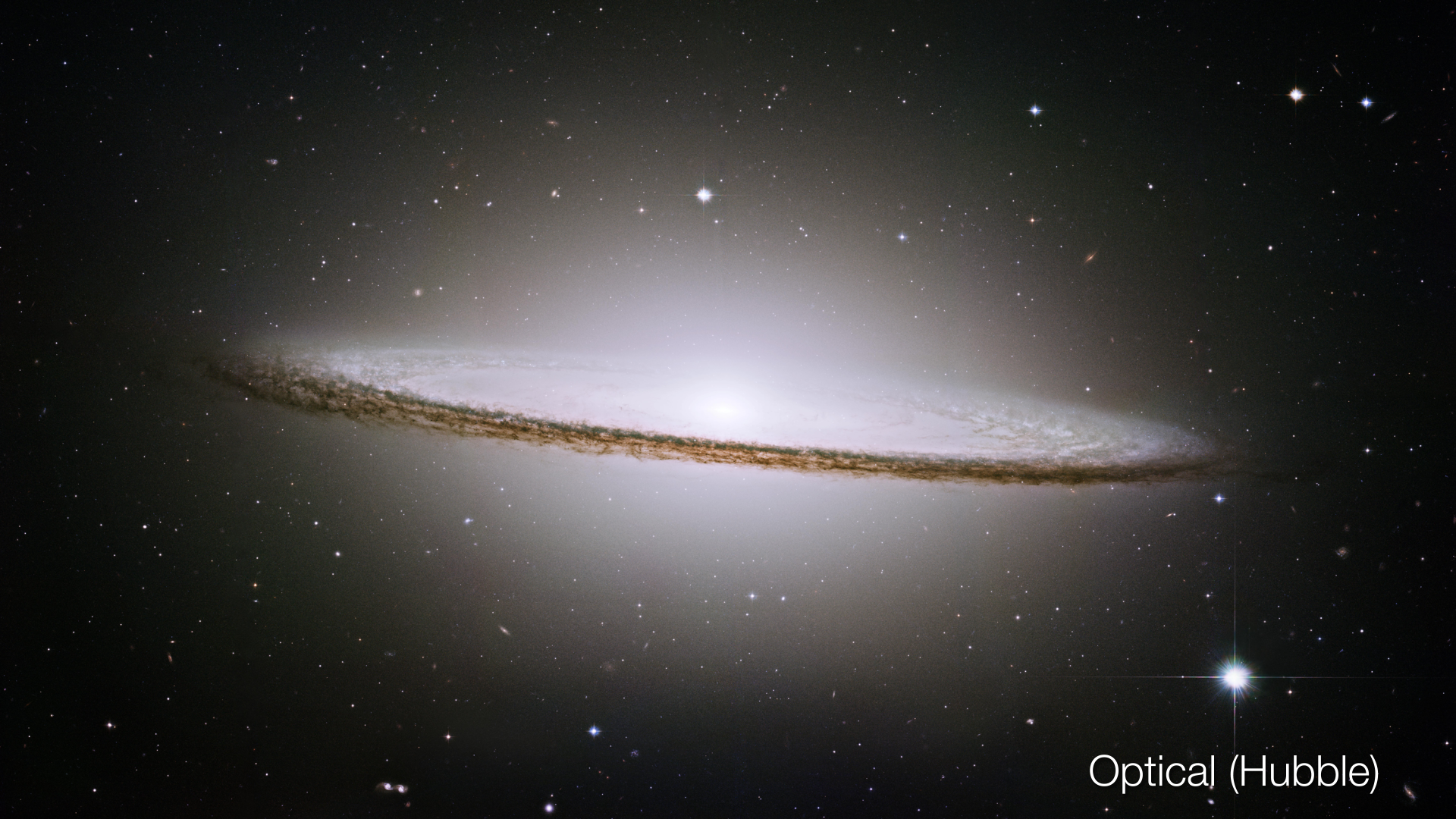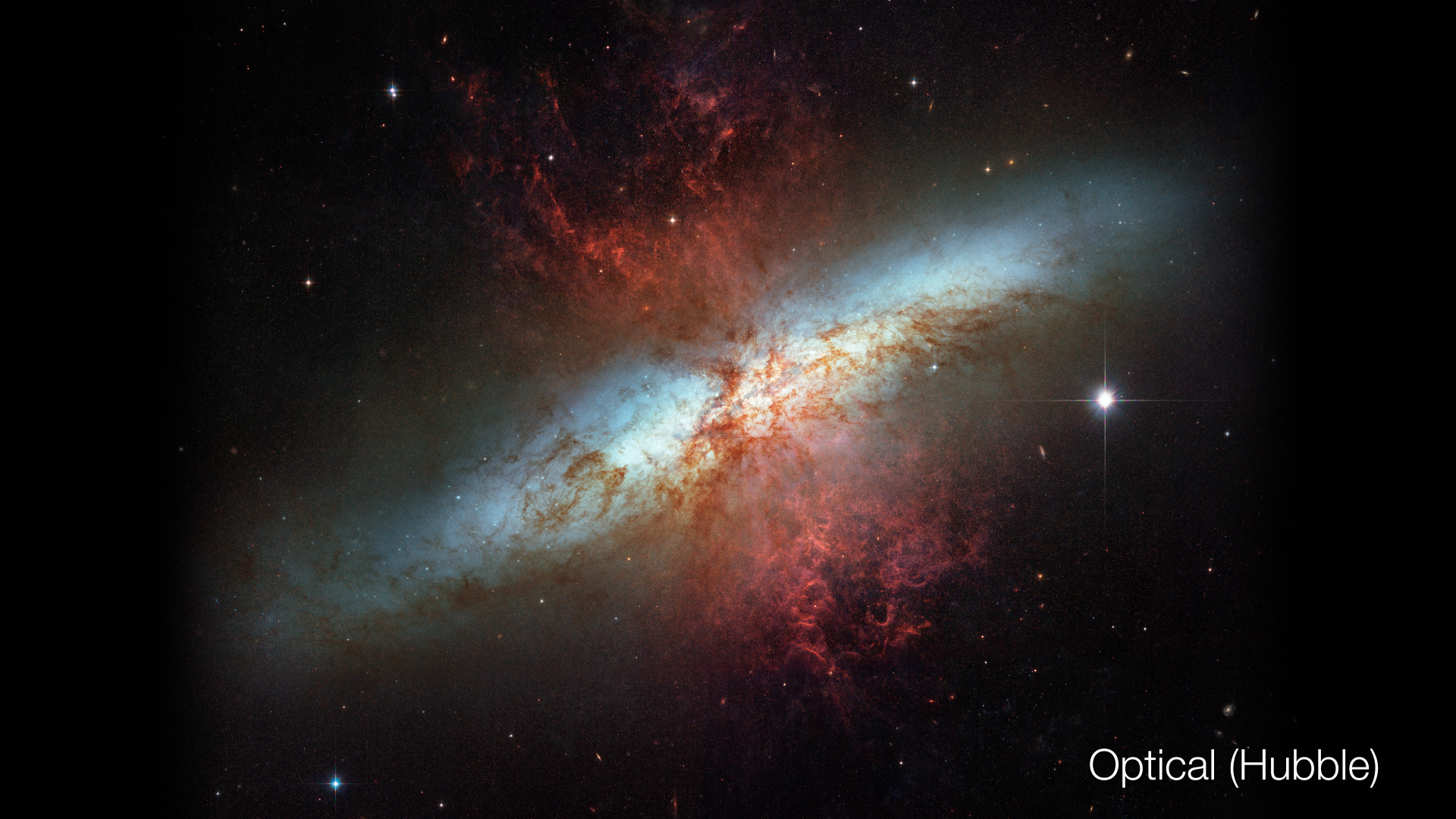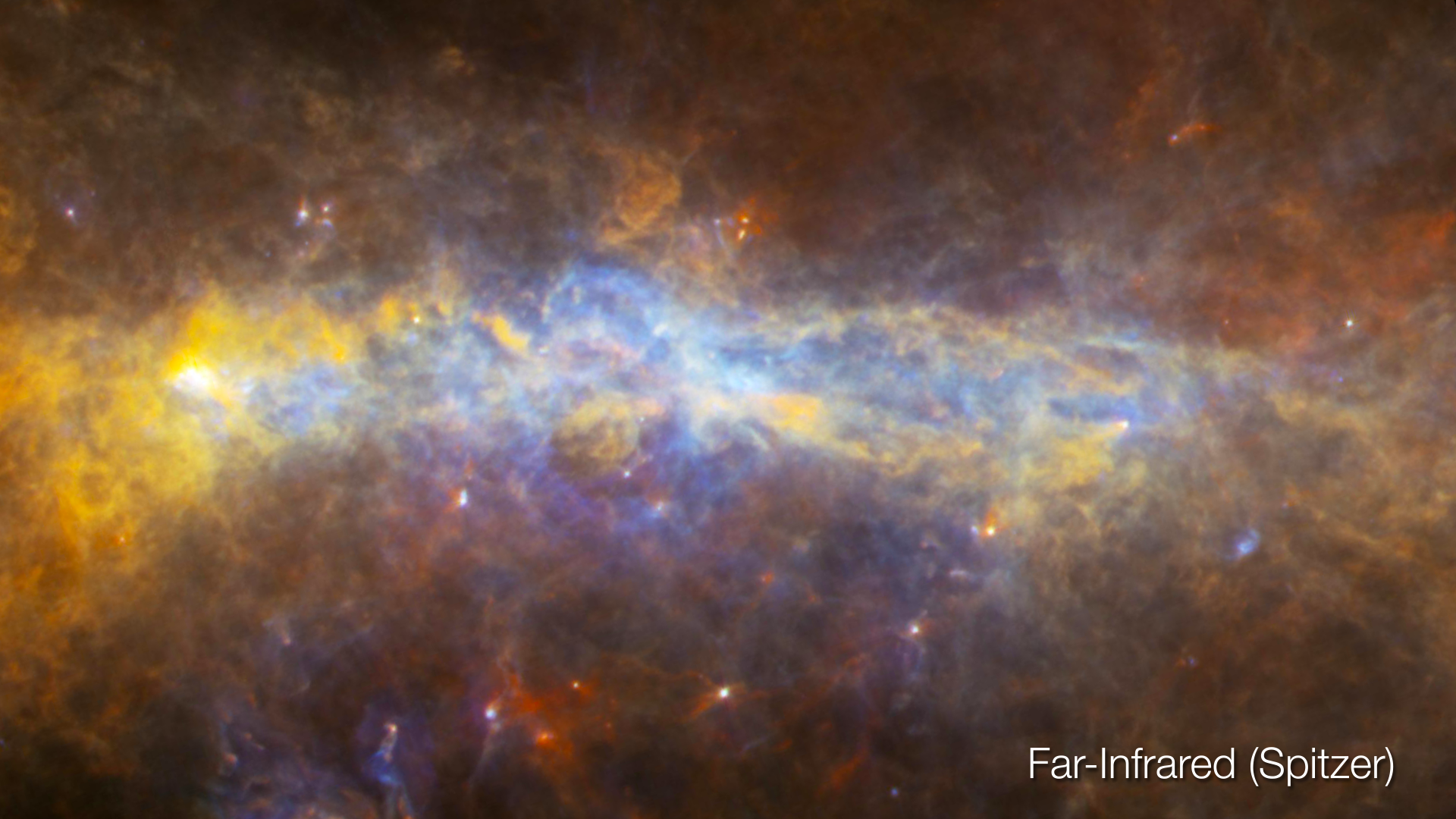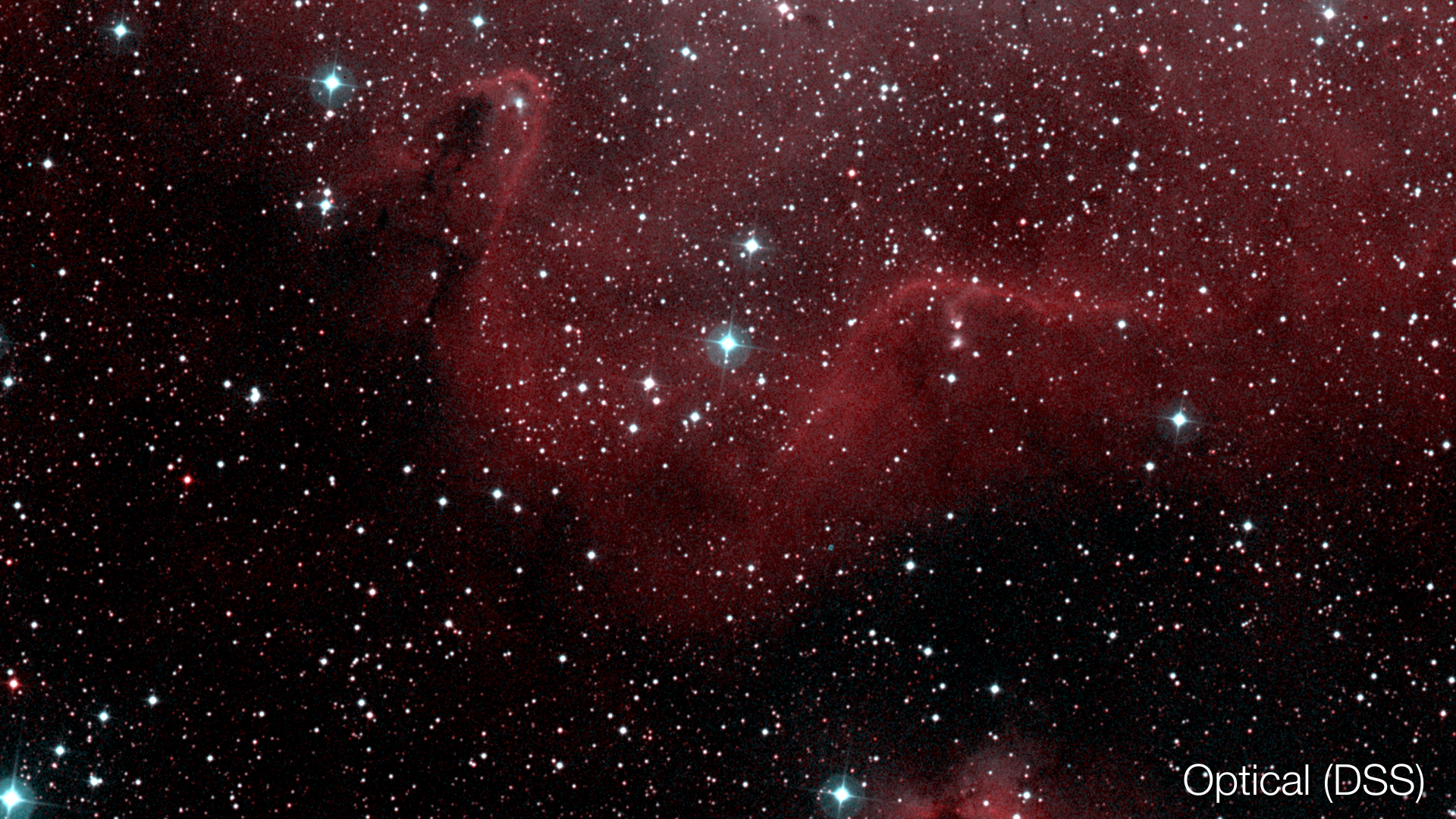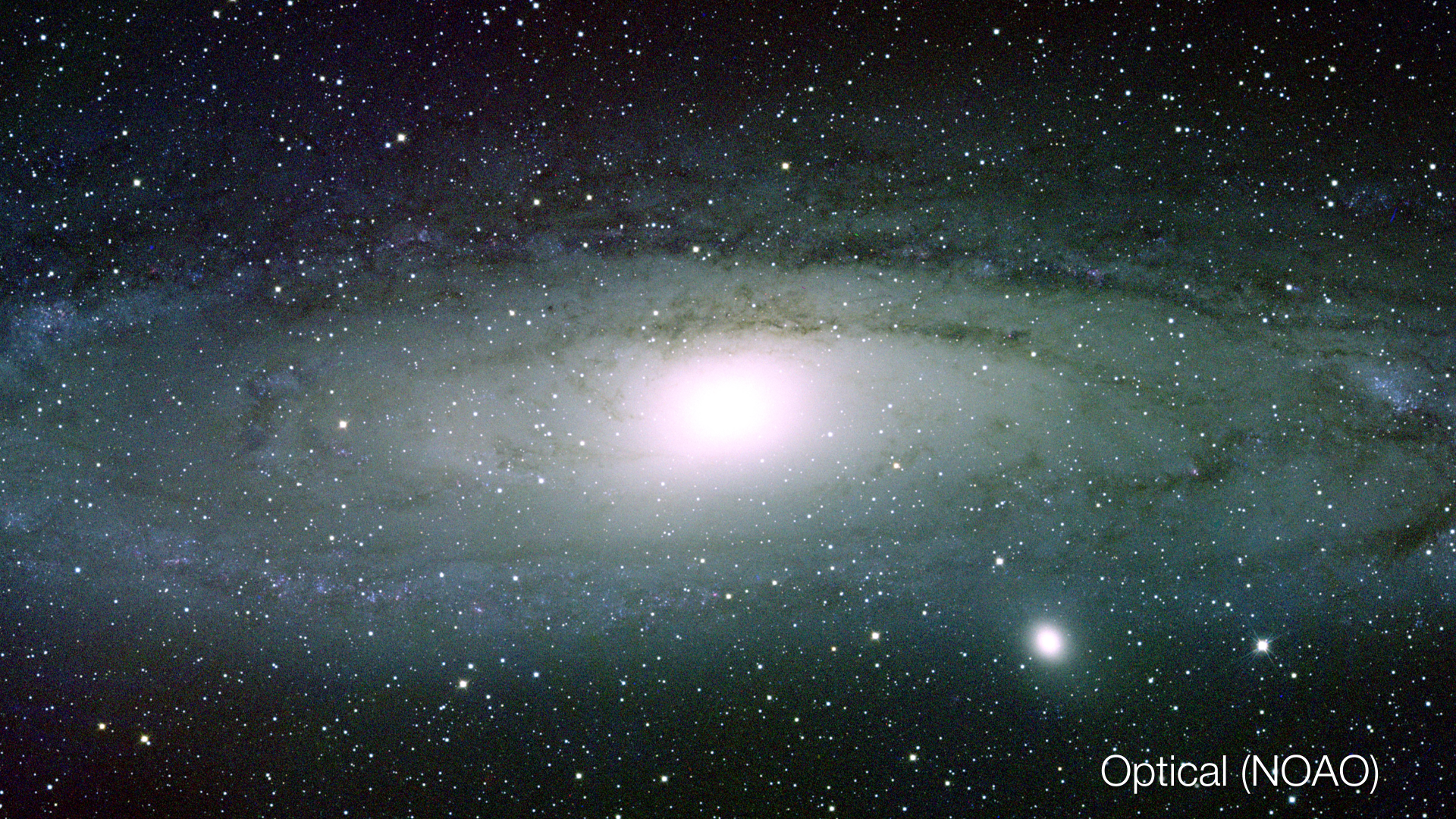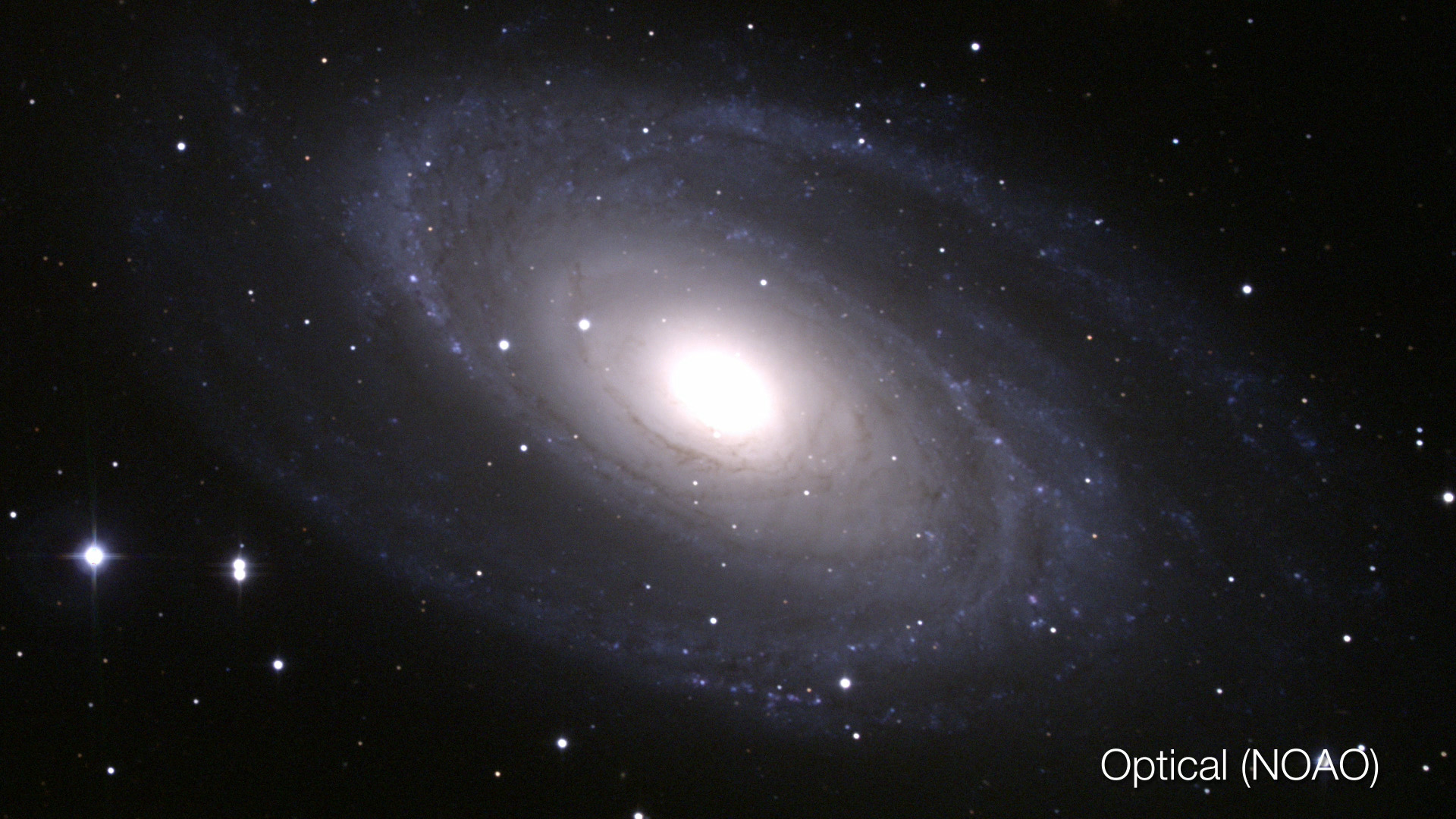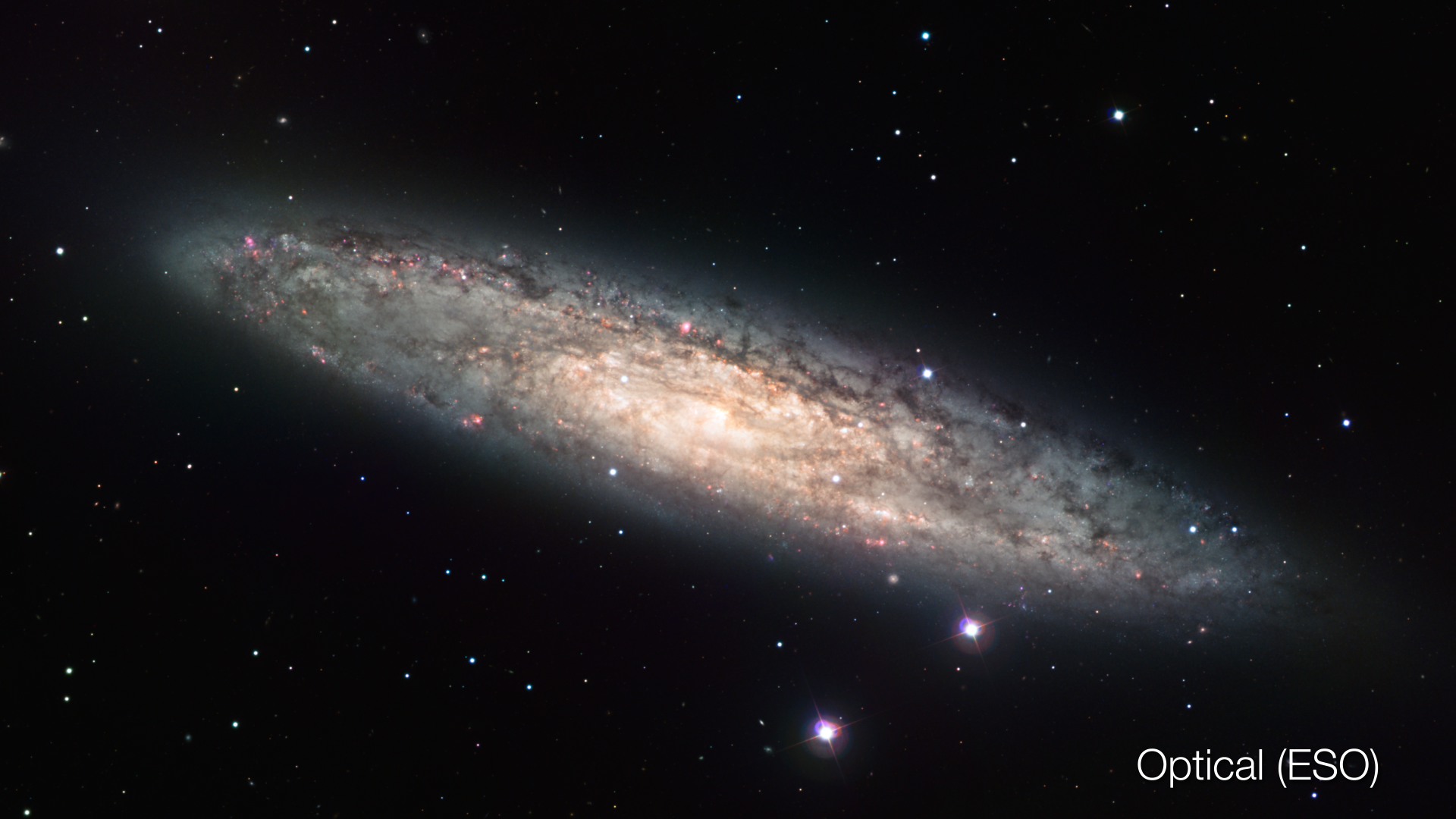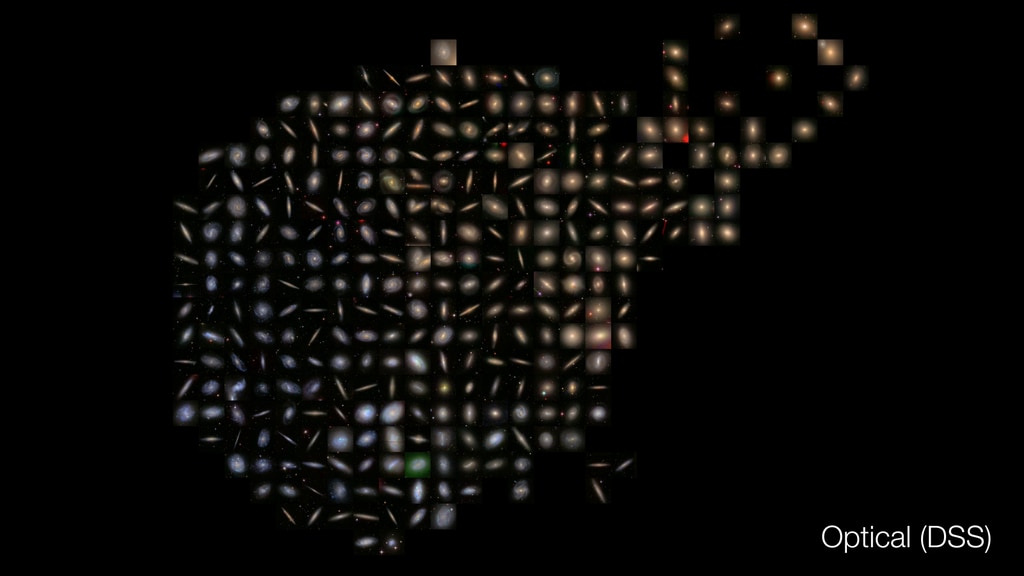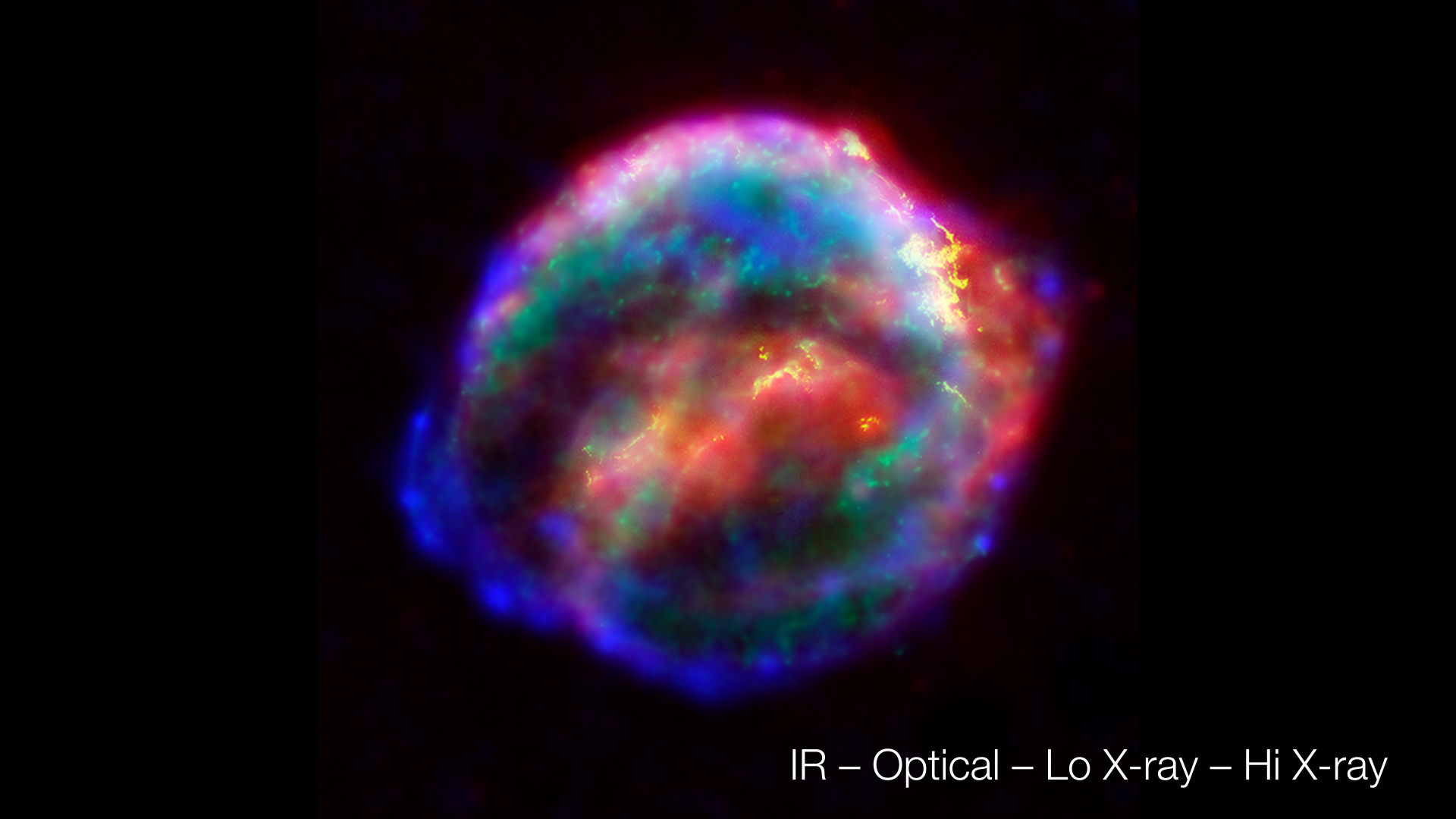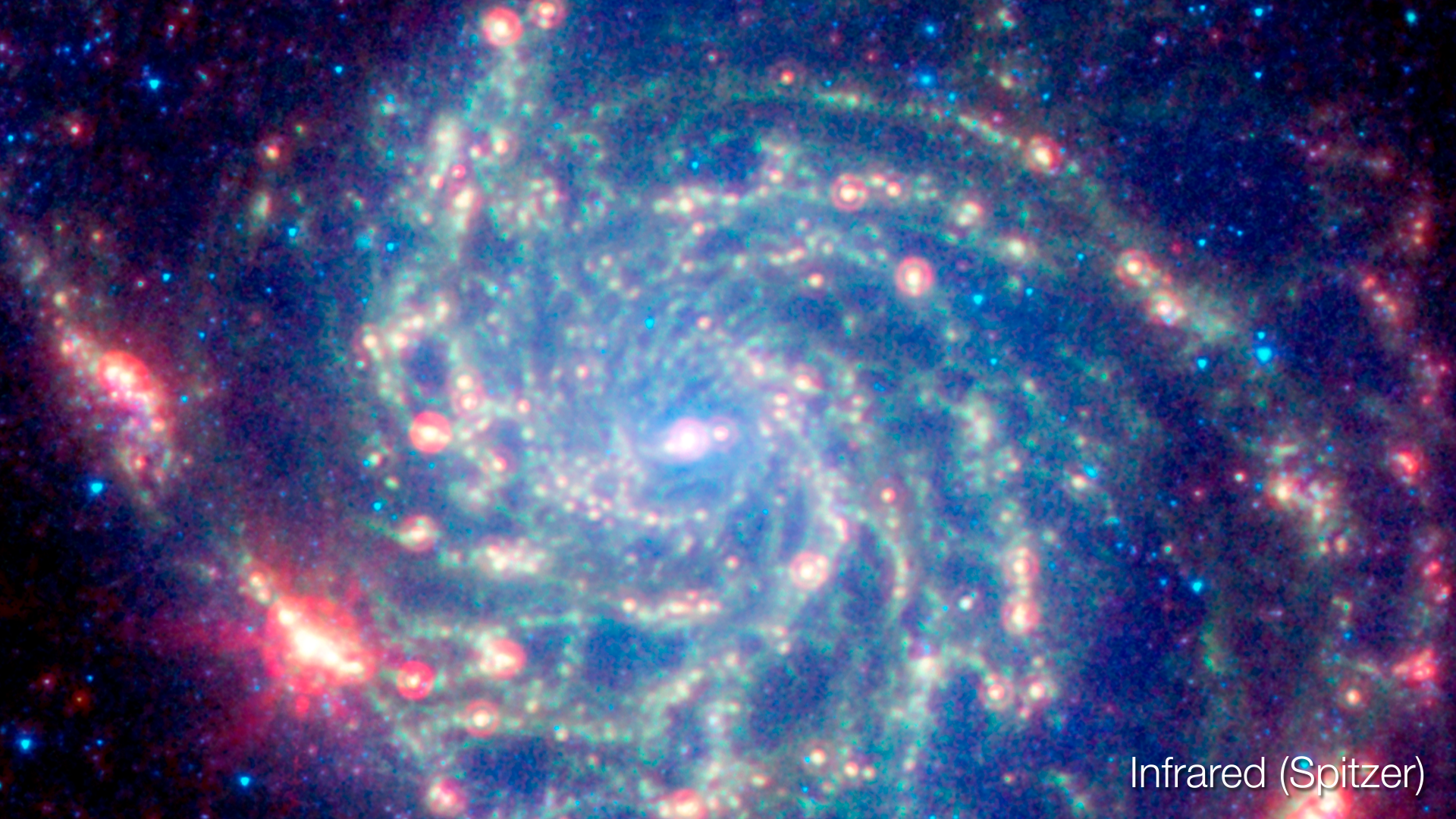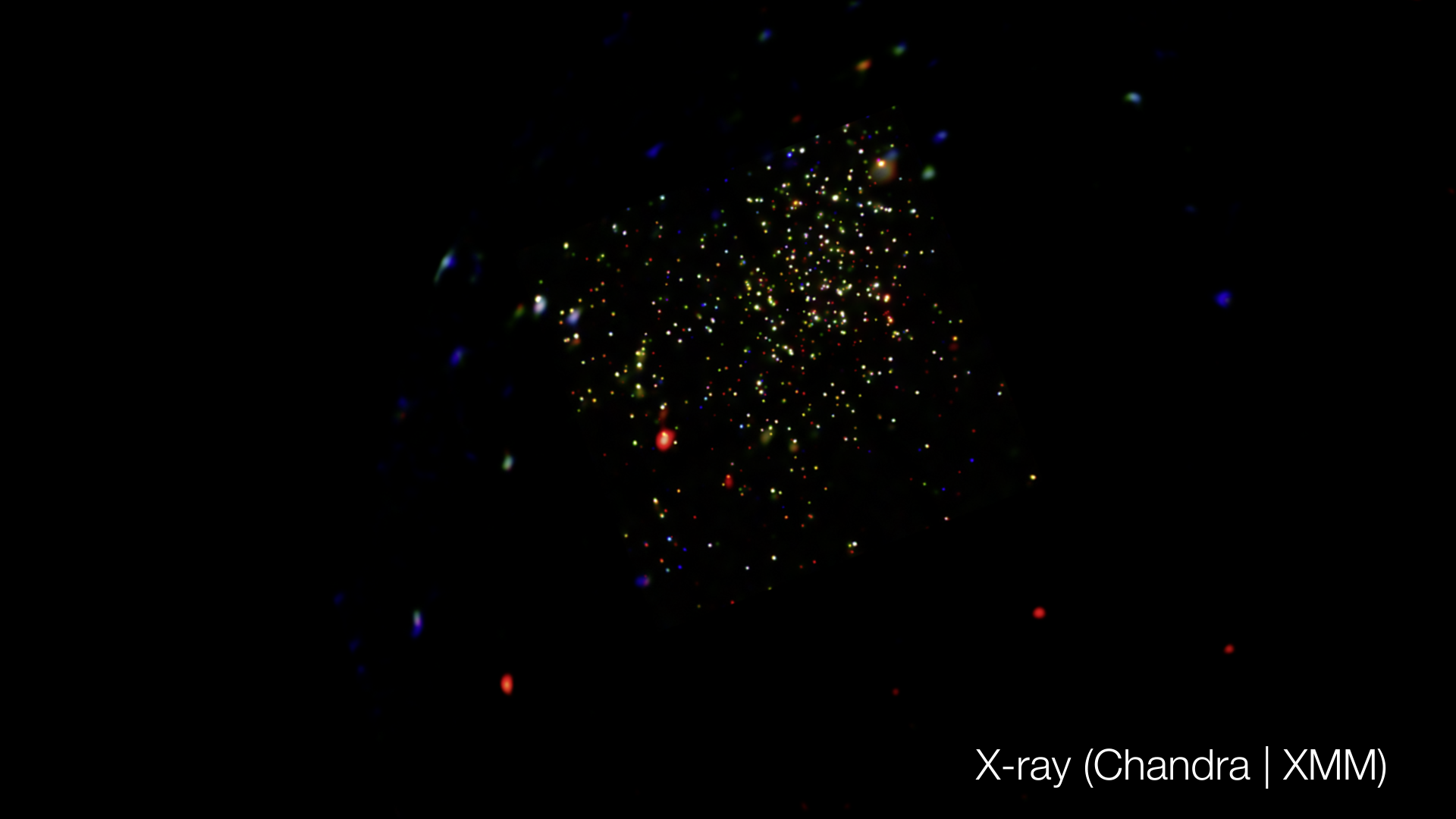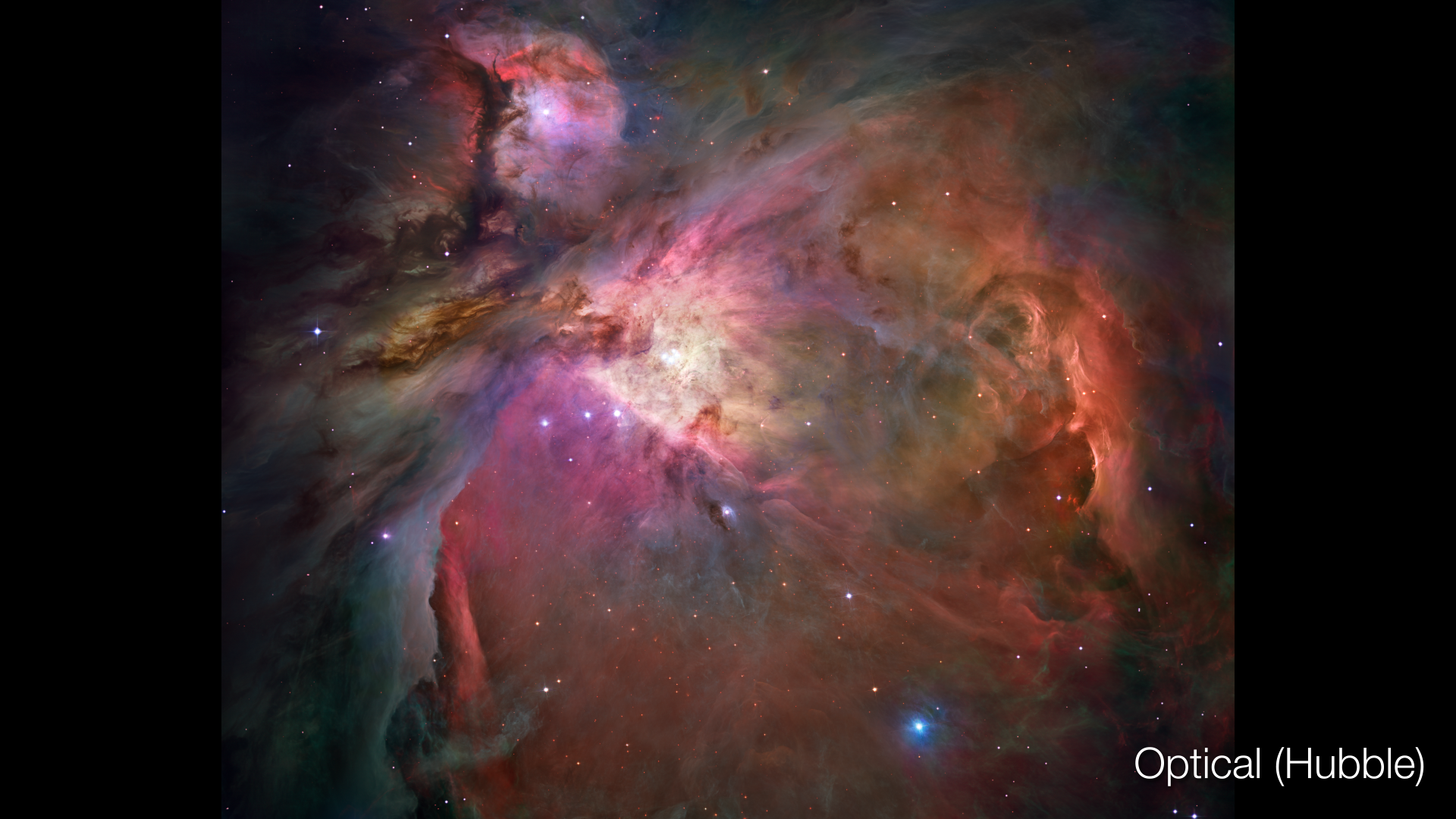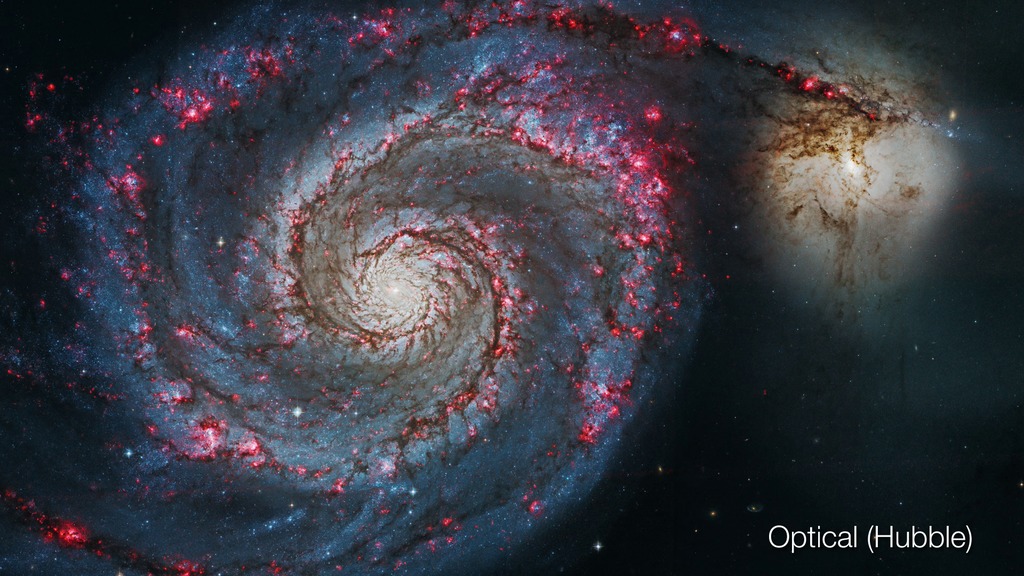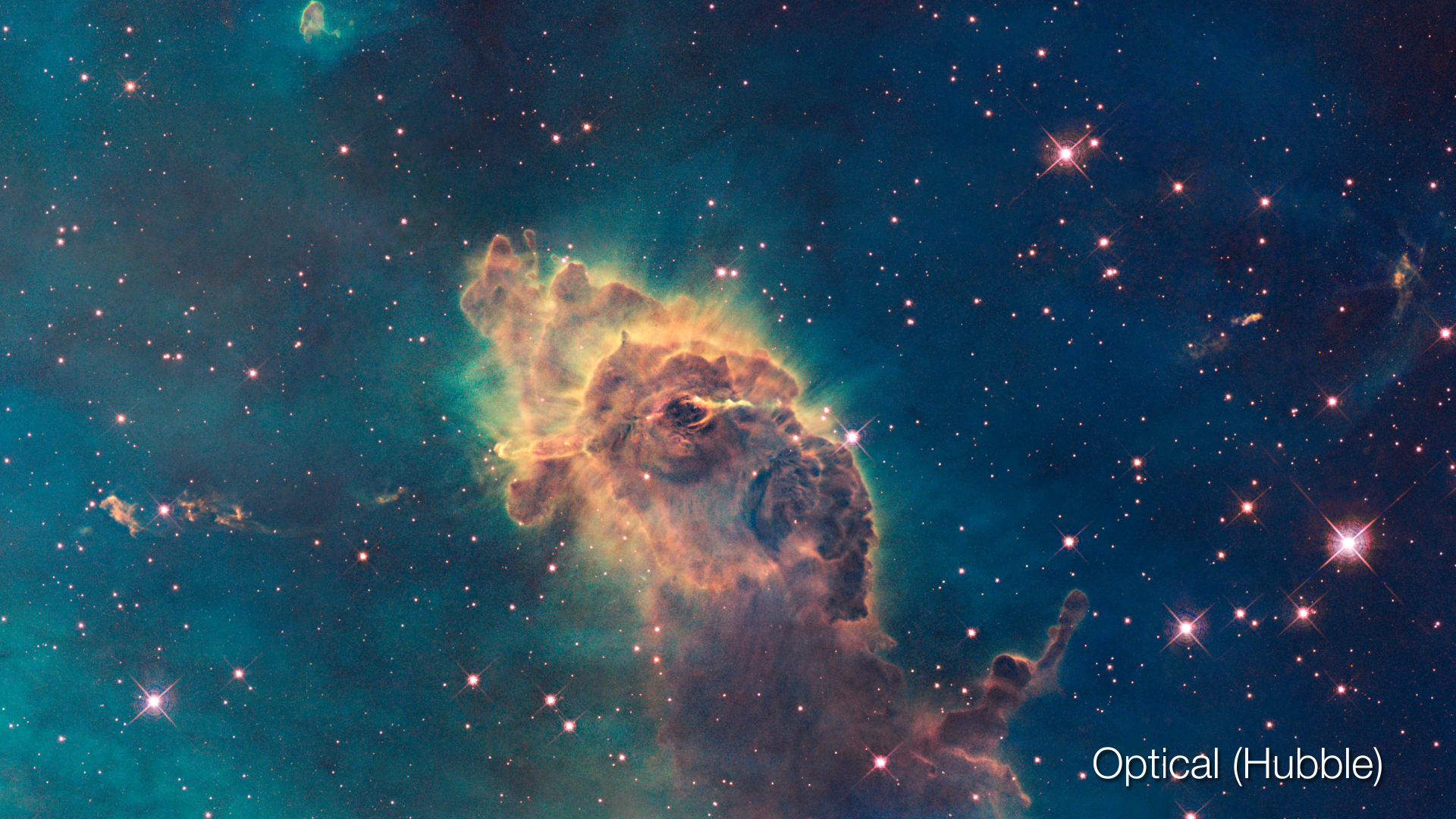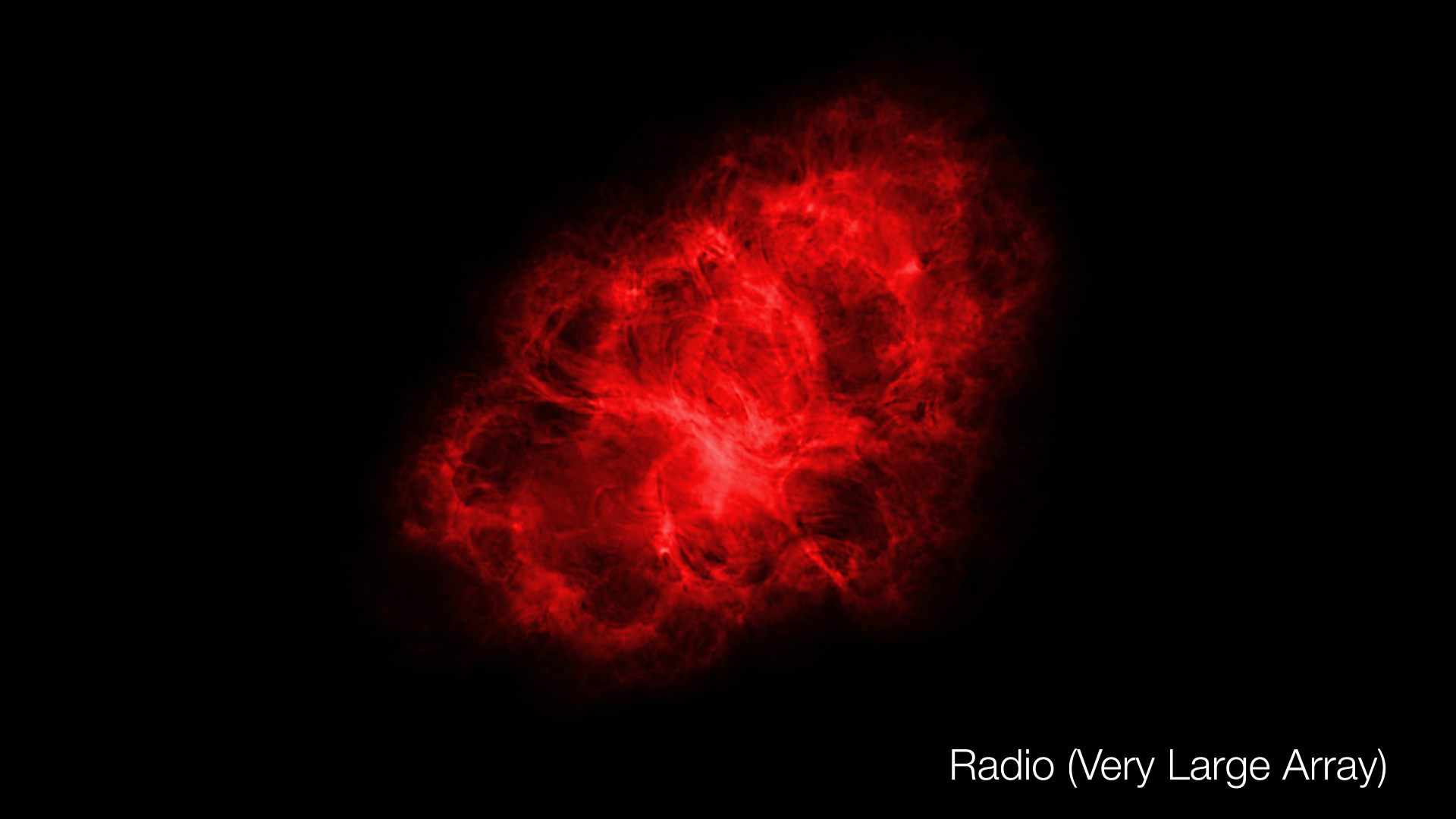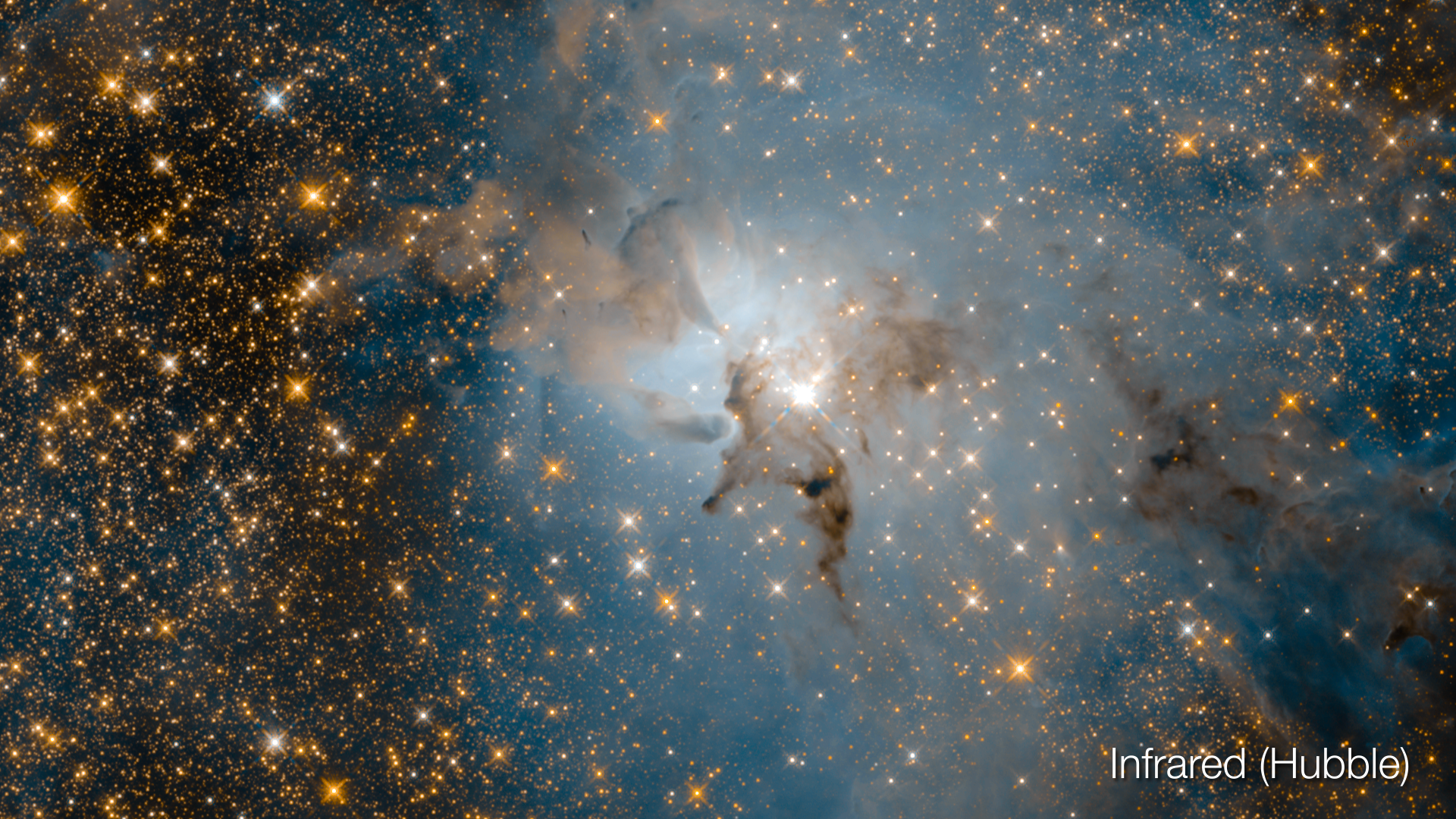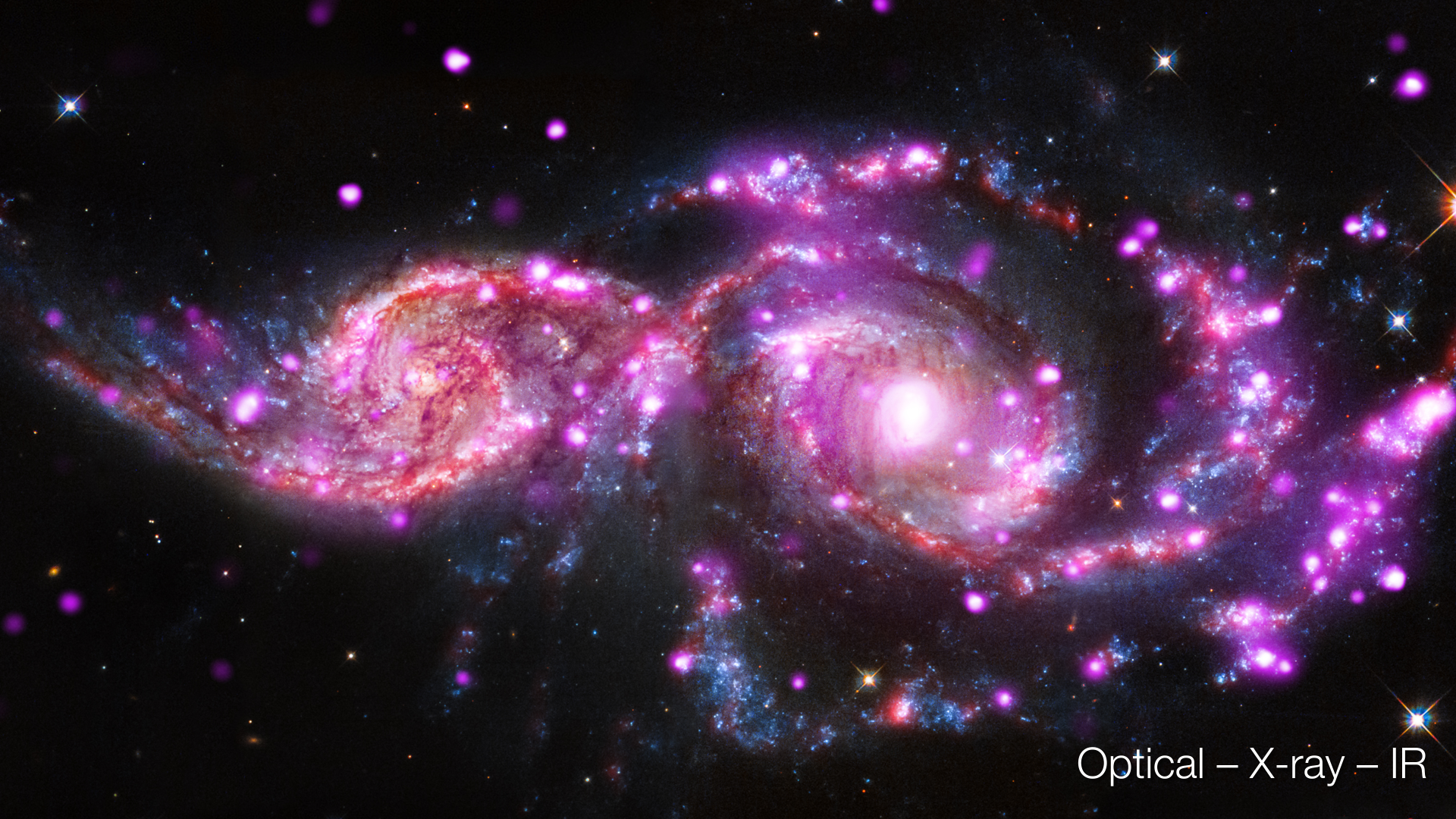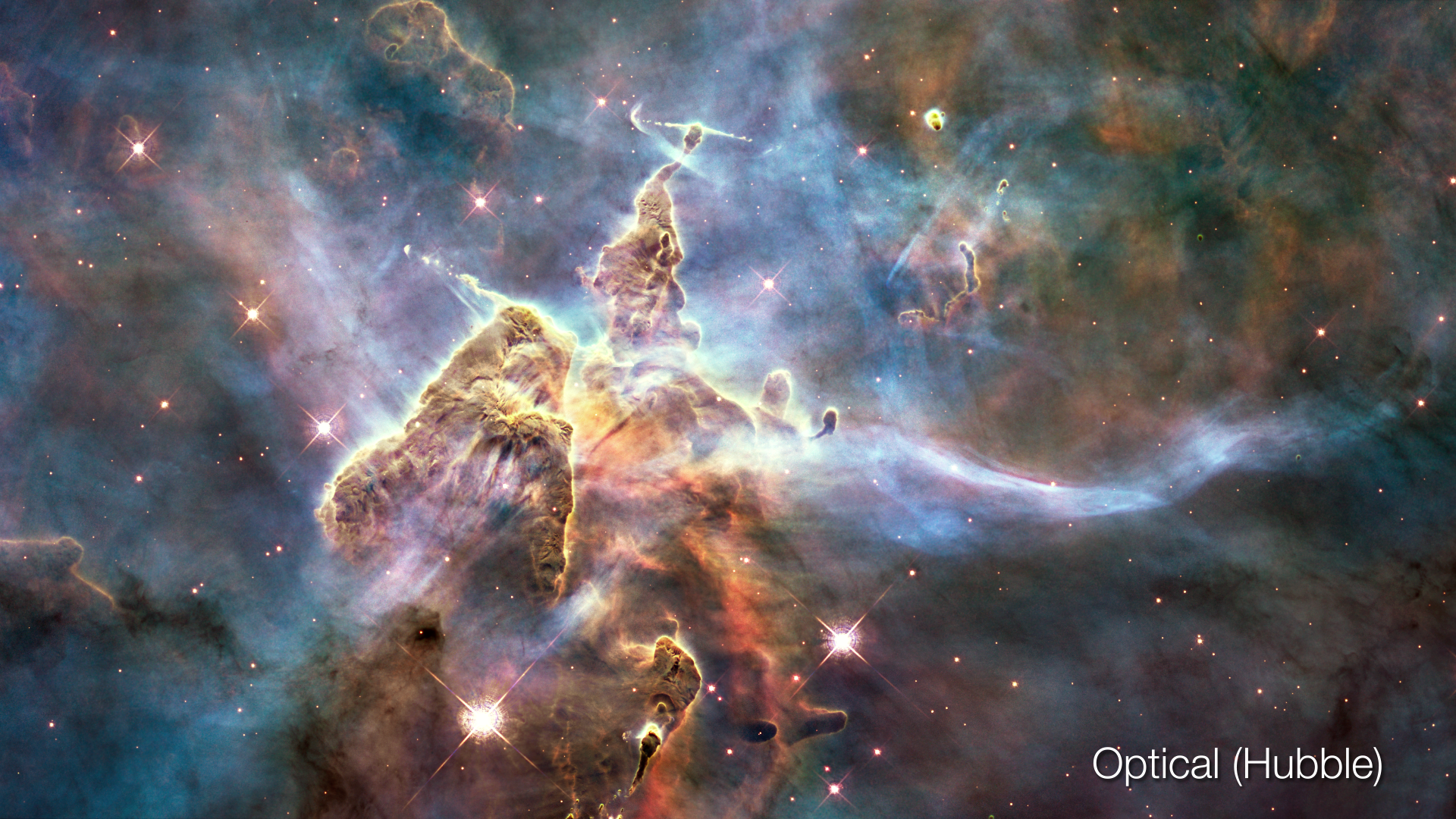30 Doradus: A Massive Star-Forming Region
This animation of the active star-forming region 30 Doradus showcases Hubble's entire wavelength range, from ultraviolet to infrared.
30 Doradus (the Tarantula Nebula) is a very bright and active star-forming region outside of the Milky Way galaxy, at 160,000 light-years away. “30 Dor” is home to the central star cluster NGC 2070, including the most active region, R136, which appears in the central-right area of the image. R136 is a few million years old and contains many thousands of young stars, including several of the largest known. The visible (Hubble) bright blue stars shine out of the cleared cavity that is excavated by stellar winds. The redder stars are still partially embedded in the cloud material, seen in shadow except where illuminated by the cavity stars. In the infrared (Hubble) view the embedded stars shine more clearly through the intervening cloud material.
This animation is the same as above, played twice as fast.

Infrared image of 30 Doradus

Ultraviolet, Visible and Infrared image of 30 Doradus
Credits
Please give credit for this item to:
Video: NASA, ESA, and G. Bacon (STScI)
Images: NASA, ESA, F. Paresce (INAF-IASF, Bologna, Italy), R. O'Connell (University of Virginia, Charlottesville), and the Wide Field Camera 3 Science Oversight Committee
-
Visualizer
- Greg Bacon (STScI)
-
Image processing
- Francesco Paresce (INAF OAS Bologna)
- Robert O'Connell (University of Virginia)
-
Technical support
- Leann Johnson (Global Science and Technology, Inc.)
Release date
This page was originally published on Monday, June 11, 2018.
This page was last updated on Monday, March 10, 2025 at 12:25 AM EDT.
Missions
This page is related to the following missions:Datasets used
-
[Hubble Space Telescope]
ID: 831 -
WFC3 [Hubble Space Telescope: Wide Field Camera 3]
ID: 874
Note: While we identify the data sets used on this page, we do not store any further details, nor the data sets themselves on our site.
